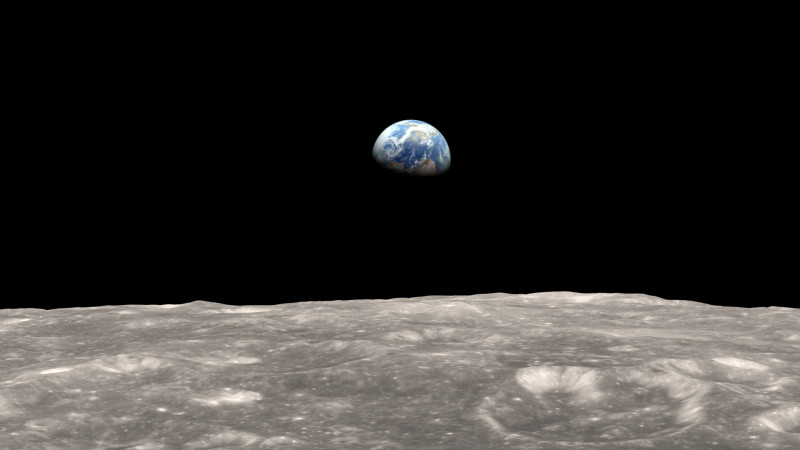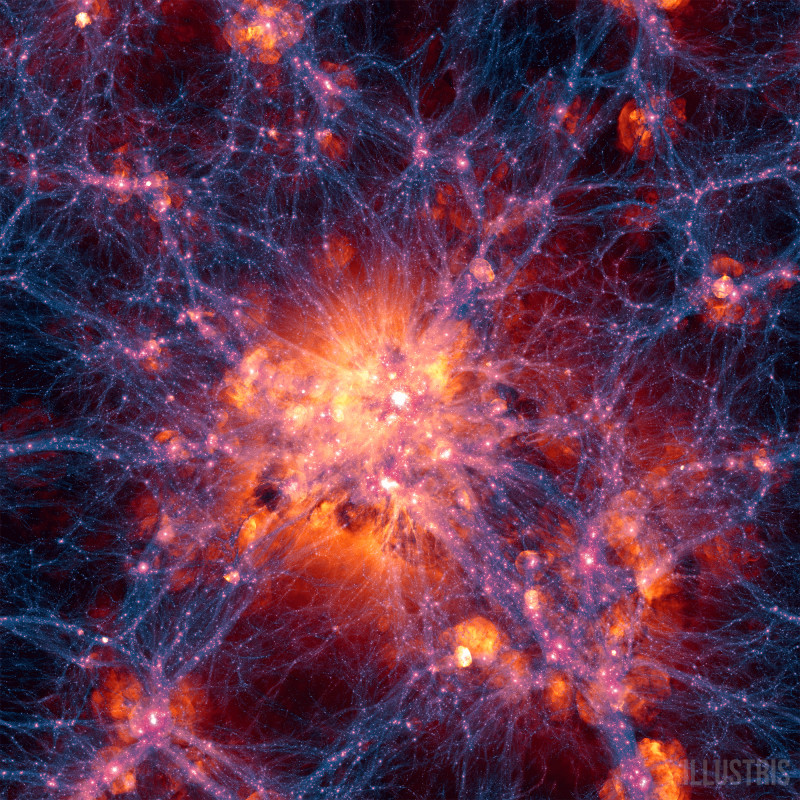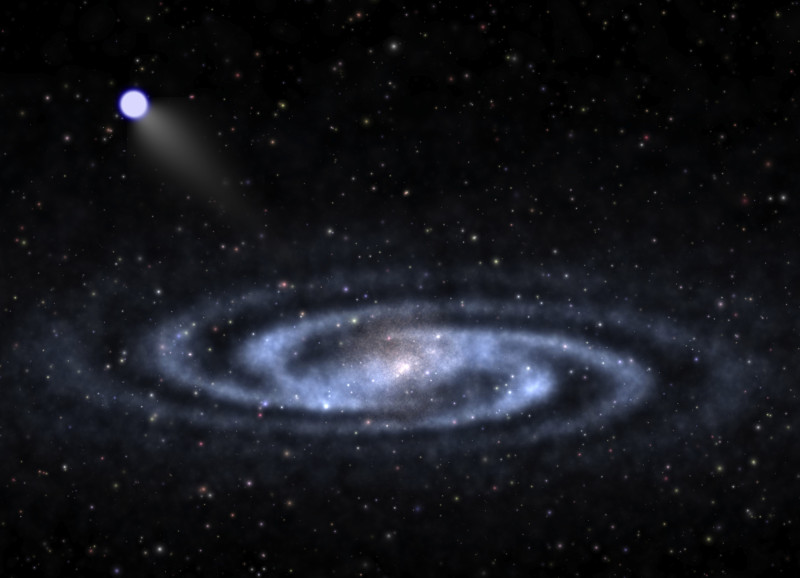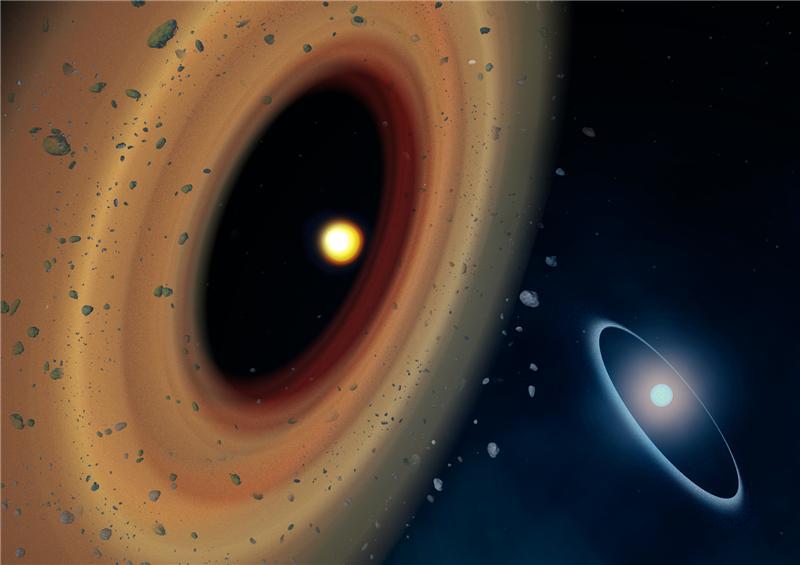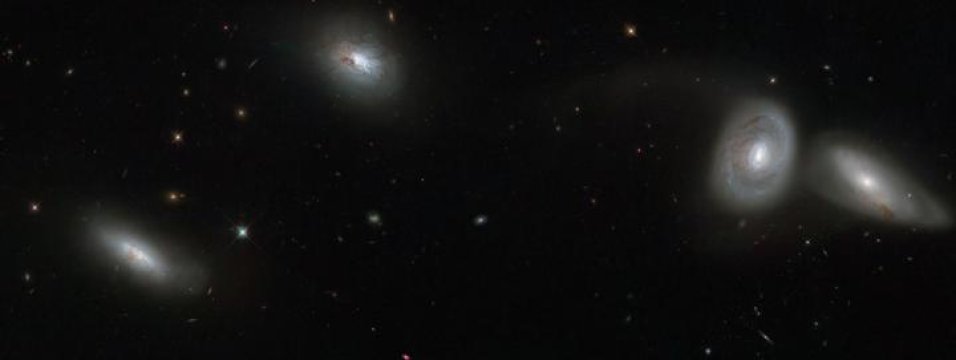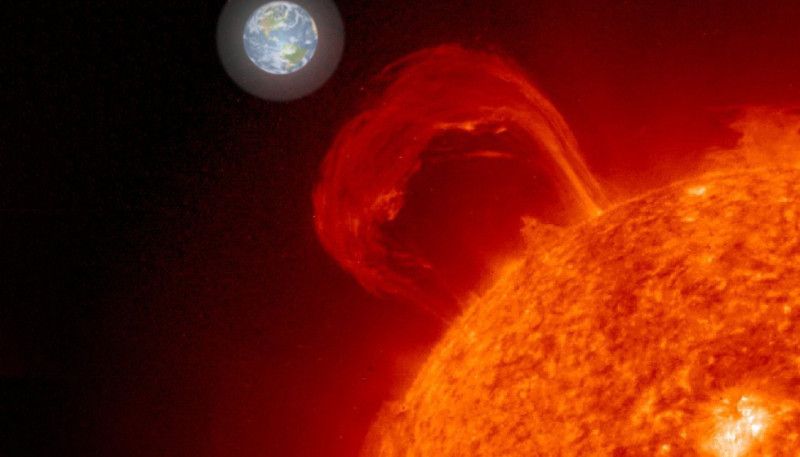
Earth’s magnetic field, or magnetosphere, stretches from the planet’s core out into space, where it meets the solar wind, a stream of charged particles emitted by the sun. For the most part, the magnetosphere acts as a shield to protect Earth from this high-energy solar activity.
But when this field comes into contact with the sun’s magnetic field — a process called “magnetic reconnection” — powerful electrical currents from the sun can stream into Earth’s atmosphere, whipping up geomagnetic storms and space weather phenomena that can affect high-altitude aircraft, as well as astronauts on the International Space Station.
Now scientists at MIT and NASA have identified a process in Earth’s magnetosphere that reinforces its shielding effect, keeping incoming solar energy at bay.
By combining observations from the ground and in space, the team observed a plume of low-energy plasma particles that essentially hitches a ride along magnetic field lines — streaming from Earth’s lower atmosphere up to the point, tens of thousands of kilometers above the surface, where the planet’s magnetic field connects with that of the sun. In this region, which the scientists call the “merging point,” the presence of cold, dense plasma slows magnetic reconnection, blunting the sun’s effects on Earth.
“The Earth’s magnetic field protects life on the surface from the full impact of these solar outbursts,” says John Foster, associate director of MIT’s Haystack Observatory. “Reconnection strips away some of our magnetic shield and lets energy leak in, giving us large, violent storms. These plasmas get pulled into space and slow down the reconnection process, so the impact of the sun on the Earth is less violent.”
Foster and his colleagues publish their results in this week’s issue of Science. The team includes Philip Erickson, principal research scientist at Haystack Observatory, as well as Brian Walsh and David Sibeck at NASA’s Goddard Space Flight Center.
Mapping Earth’s magnetic shield
For more than a decade, scientists at Haystack Observatory have studied plasma plume phenomena using a ground-based technique called GPS-TEC, in which scientists analyze radio signals transmitted from GPS satellites to more than 1,000 receivers on the ground. Large space-weather events, such as geomagnetic storms, can alter the incoming radio waves — a distortion that scientists can use to determine the concentration of plasma particles in the upper atmosphere. Using this data, they can produce two-dimensional global maps of atmospheric phenomena, such as plasma plumes.
These ground-based observations have helped shed light on key characteristics of these plumes, such as how often they occur, and what makes some plumes stronger than others. But as Foster notes, this two-dimensional mapping technique gives an estimate only of what space weather might look like in the low-altitude regions of the magnetosphere. To get a more precise, three-dimensional picture of the entire magnetosphere would require observations directly from space.
Toward this end, Foster approached Walsh with data showing a plasma plume emanating from Earth’s surface, and extending up into the lower layers of the magnetosphere, during a moderate solar storm in January 2013. Walsh checked the date against the orbital trajectories of three spacecraft that have been circling the Earth to study auroras in the atmosphere.
As it turns out, all three spacecraft crossed the point in the magnetosphere at which Foster had detected a plasma plume from the ground. The team analyzed data from each spacecraft, and found that the same cold, dense plasma plume stretched all the way up to where the solar storm made contact with Earth’s magnetic field.
A river of plasma
Foster says the observations from space validate measurements from the ground. What’s more, the combination of space- and ground-based data give a highly detailed picture of a natural defensive mechanism in Earth’s magnetosphere.
“This higher-density, cold plasma changes about every plasma physics process it comes in contact with,” Foster says. “It slows down reconnection, and it can contribute to the generation of waves that, in turn, accelerate particles in other parts of the magnetosphere. So it’s a recirculation process, and really fascinating.”
Foster likens this plume phenomenon to a “river of particles,” and says it is not unlike the Gulf Stream, a powerful ocean current that influences the temperature and other properties of surrounding waters. On an atmospheric scale, he says, plasma particles can behave in a similar way, redistributing throughout the atmosphere to form plumes that “flow through a huge circulation system, with a lot of different consequences.”
“What these types of studies are showing is just how dynamic this entire system is,” Foster adds.
Story Source:
The above story is based on materials provided by Massachusetts Institute of Technology. Note: Materials may be edited for content and length.

